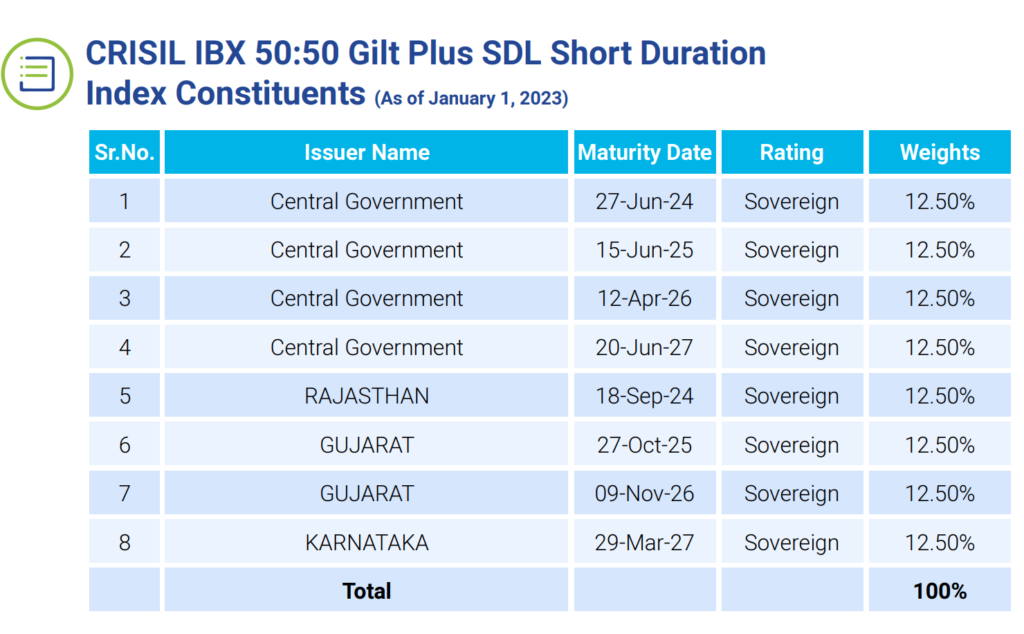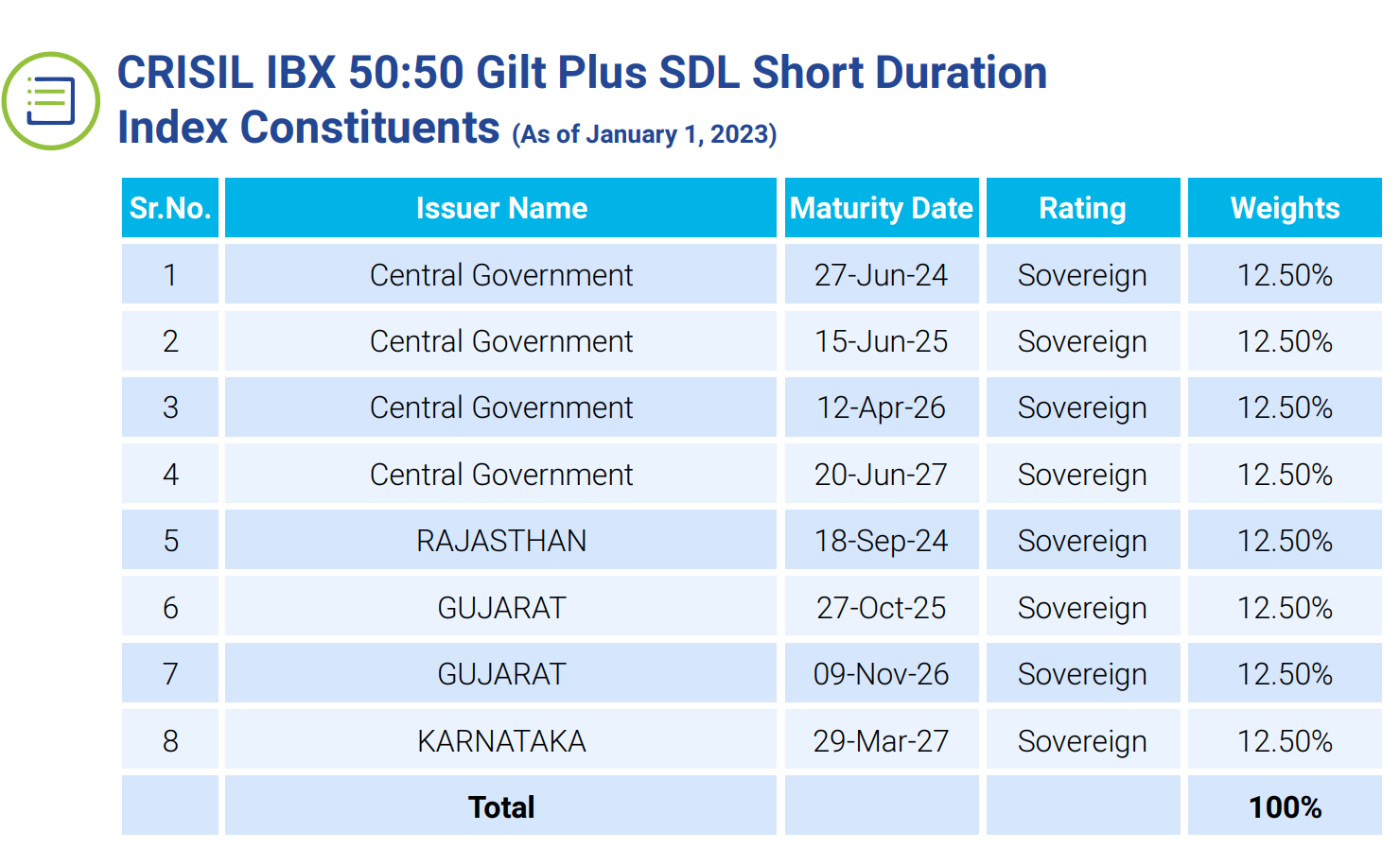Well, the actual name is Edelweiss CIBIL IBX 50:50 Gilt Plus SDL Short Duration Index Fund. That’s a pretty big name for a short duration fund. And it promises to offer a lot.
Beyond the marketing buzz, let’s find out what the fund has to really offer.
The fund is categorised “Short Duration Fund” under SEBI’s categorisation of debt funds.
As per the Scheme Information Document (SID):
The Edelweiss CIBIL IBX 50:50 Gilt Plus SDL Short Duration Index Fund will invest passively in the constituents of the CIBIL IBX 50:50 Gilt Plus SDL Short Duration Index. The fund will have a low credit risk and a high interest rate risk.
Below are some of the quantitative parameters of the index.

There are 2 other things that stand out in this fund offer.
#1 It is not taking credit risk.
How? It will invest only in the central govt and state govt bonds and they come with state guarantee. So no losing principal or interest there.
The fund will invest in securities that mature in 1 to 5 years. The current Modified Duration of the index, on which the fund is based, is 2.63 years

The YTM of the index constituents currently is 7.34%.
Other funds in the “short duration category” are using corporate bonds or commercial paper along with sovereign. They aim to deliver a higher return but.
The following is the credit rating weightage of HDFC Short Term Debt Fund.

#2 The fund has a low expense ratio translating to better returns for the investor.
The fund has not specified its expense ratio and it is something that we will see over the next few months with the disclosures. However, as a passive fund (it will invest only in the index constituents), the expense ratio is likely to be low.
I am willing to assume that it will somewhere around 0.15% for the direct plan and 0.65% for the regular plan. These numbers are mentioned for the index in the first image in this post.
With this assumptions, the net return with no credit risk to the direct investor will be YTM – expense ratio, that is, 7.34% – 0.15% = 7.29%. For regular plan it will be 0.5% lesser.
In contrast, HDFC Short Term Debt Fund – Direct Plan has an expense ratio of 0.29%. It has a current YTM of 7.72%. The net return to the investor is likely to be 7.43%.
Does that mean you invest in the Edelweiss Shot Duration Index fund?
Hold your horses.
This fund is NOT for the money which you need in the next 1 year, may be even a little more. If required, you should be willing to sit with your investments for 3 years plus when the capital gains indexation benefit clicks in with the long term duration for debt funds.
Once you have understood the time horizon, think about the risk appetite. For someone who values safety over returns, for the given time horizon, it is a no brainer what fund to go for. This one.
Now, this is an open ended fund and doesn’t have a lock-in. So, you don’t have to invest right away. Observe the fund for the next few months, see the portfolio disclosures and then take a call.
DON’T FORGET THE RISK associated with interest rate movements.
The fund has also been launched at an opportune time. The interest rates are at near peak levels. So, for now, the interest rate risk is going to play out favourably.
What happens when the interest rate cycle plays out on the upside and starts moving downwards? Well, the fund’s current positioning of a fund to park any short term money goes for a bit of a toss there. As interest rates go down, the portfolio is likely to deliver a negative outcome (like all other debt funds with a similar duration)
—
Note: A short duration fund is one which maintains the portfolio duration between 1 and 3 years. Duration helps understand the riskiness of the portfolio in relation to interest rates.
A modified duration of 1 means that if the interest rates go up by 1%, the portfolio value will go down by 1%. And vice versa.
—
Read: Parag Parikh Conservative Hybrid Fund – Should you invest?
Read: Dynamic Bond Funds


